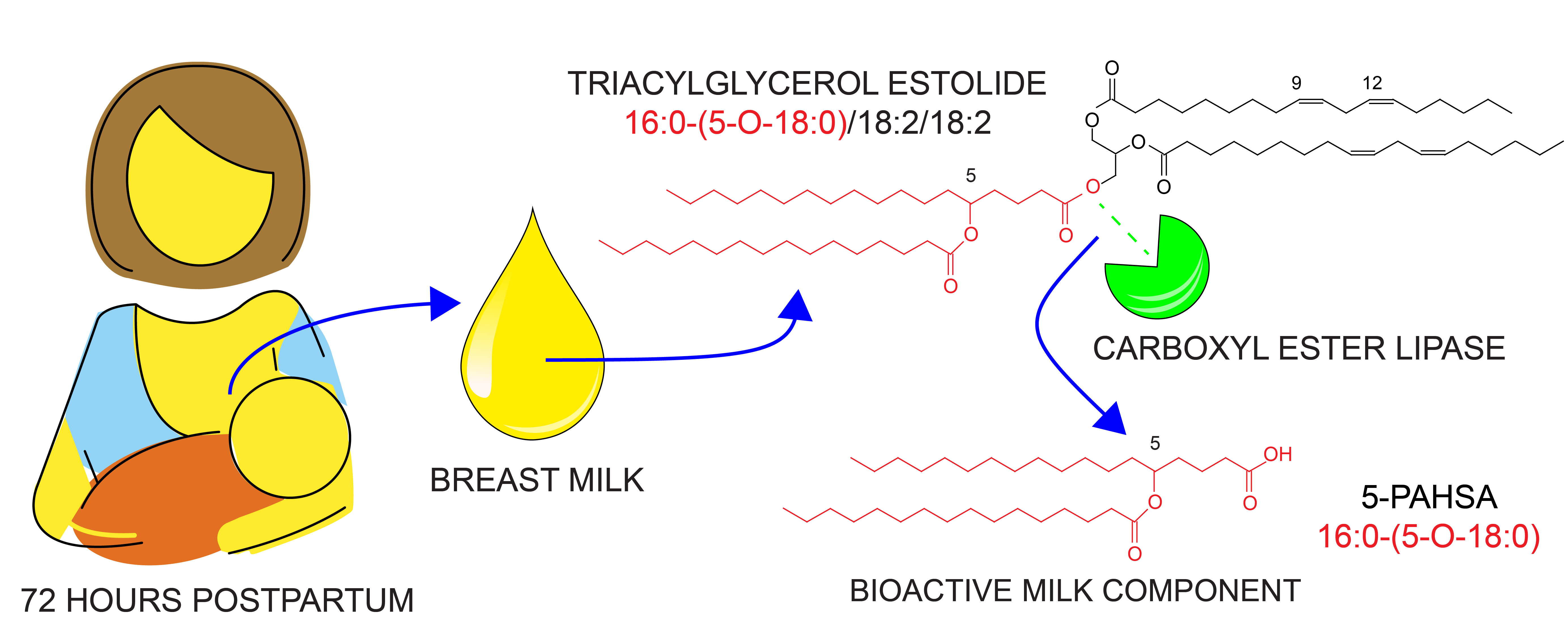New lipid classes in human breastmilk
Breastfeeding is the best way of nutrition for a newborn baby. Mother's milk provides the ideal cocktail of nutrients and bioactive components for rapid growth and development in this early period of human life. Milk composition can be affected by several factors such as maternal dietary habits, mode of delivery, and pregnancy length. An essential question for neonatologists is just the optimal composition of breastmilk for premature babies.
In our study, we investigated the impact of preterm birth and a cesarean section on the quality of the first form of milk – colostrum. Analysis of the samples obtained from mothers at the Institute for the Care of Mother and Child in Prague showed that both the mode and term of delivery slightly negatively affected the composition of colostrum. In these cases, the mammary gland of mothers did not have enough time to initiate fully-fledged milk production. Still, this negative effect disappears in time, and mature milk composition resembles the milk of mothers who delivered spontaneously in term.
Moreover, we discovered a peculiar class of lipids called triacylglycerol estolides in all milk samples, which serves as a reservoir of the antiinflammatory lipids. We found out that the milk enzyme carboxyl ester lipase can digest these complex molecules and release substances with beneficial effects on the health of newborns.

Brejchová K, Palůchová V, Březinová M, Čajka T, Balas L, Durand T, Křížová M, Straňák Z, Kuda O: Triacylglycerols containing branched palmitic acid ester of hydroxystearic acid (PAHSA) are present in the breast milk and hydrolyzed by carboxyl ester lipase, Food Chemistry. 2022; 388(Sep 15)); 132983, IF = 9.231 DOI
